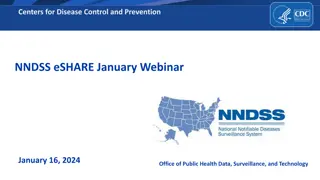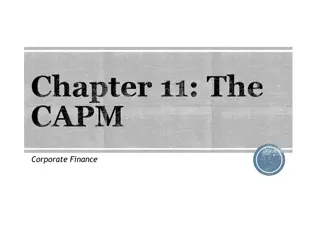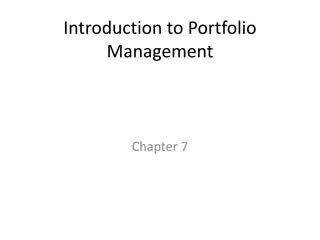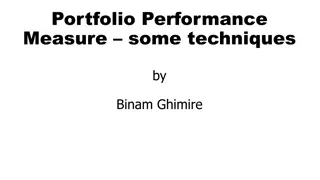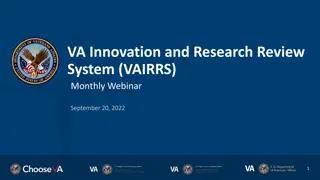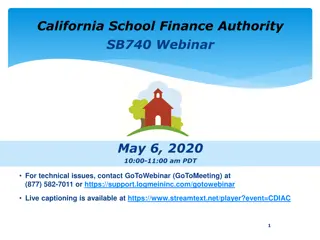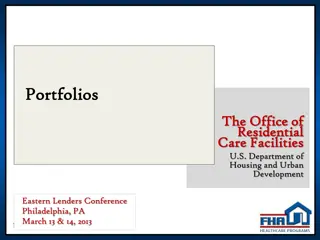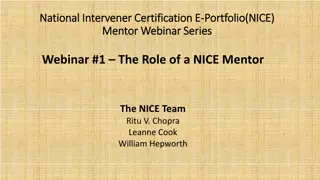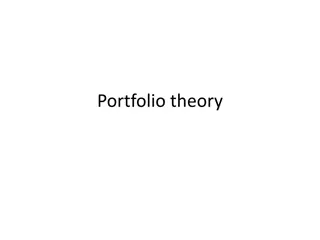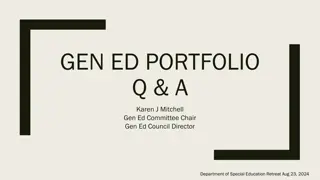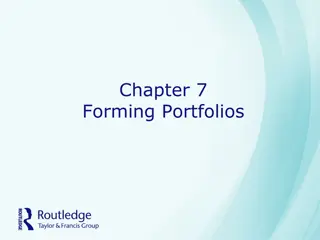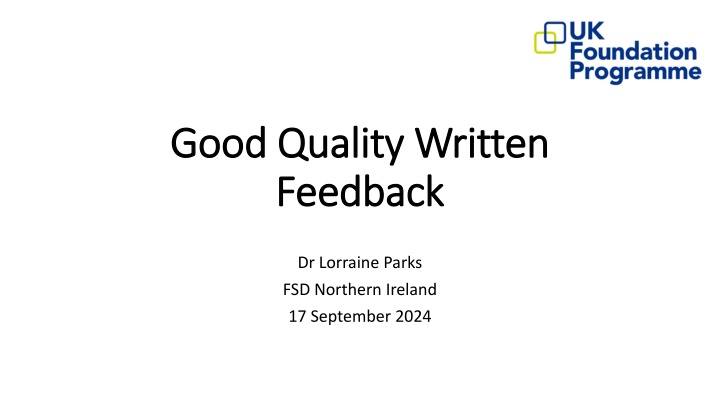
Effective Strategies for Providing Written Feedback in Professional Development
Enhance your professional development through the essential practice of written feedback. Learn about its purpose, types, characteristics of good feedback, and examples of both less and more useful feedback. Discover how timely, accurate, and constructive feedback can drive reflection, learning, and improvement in various learning events and supervision settings.
Download Presentation

Please find below an Image/Link to download the presentation.
The content on the website is provided AS IS for your information and personal use only. It may not be sold, licensed, or shared on other websites without obtaining consent from the author. If you encounter any issues during the download, it is possible that the publisher has removed the file from their server.
You are allowed to download the files provided on this website for personal or commercial use, subject to the condition that they are used lawfully. All files are the property of their respective owners.
The content on the website is provided AS IS for your information and personal use only. It may not be sold, licensed, or shared on other websites without obtaining consent from the author.
E N D
Presentation Transcript
Good Quality Written Good Quality Written Feedback Feedback Dr Lorraine Parks FSD Northern Ireland 17 September 2024
Purpose of Feedback Purpose of Feedback Essential for professional development Enhances & facilitates reflection, learning & improvement Measures performance & progress (current v previous v desired) E-portfolio evidence of improvement (SLEs) and achievement of curriculum outcomes (TAB, PSG, EOP CSRs & ESRs)
Types of written feedback Types of written feedback Supervised Learning Events; DOPS, CBD, Mini-CEX Multisource Feedback; TAB Placement Supervision Group (PSG) End of Placement Reports; CSR, ESR Formative v Summative
Characteristics of Good Feedback Characteristics of Good Feedback Timely Accurate, honest, fair, non-judgemental Specific, structured, descriptive Relevant to expected level of performance Constructive Directed towards agreed learning goals Include action plan for further development
Basic CS Report Basic CS Report
Better CS Report Better CS Report
Less useful feedback Less useful feedback No concerns Performed procedure competently Should improve with more experience Got the line in on 3rdattempt; with practice will improve Completed history, exam and discussed range of treatment options
More useful feedback More useful feedback You explained the procedure very clearly to the patient, used the correct aseptic technique, and provided reassurance when the patient became anxious. Throughout this learning event, you exhibited excellent communication and technical skills, showing a high level of situational awareness and clinical competence Maybe consider having a spare needle available next time to minimise delay or interruption to the procedure As you may not get an opportunity to perform this technique again on a patient for some time, you might wish to consider practising on the simulator to maintain and develop your skills further .
Thank you for listening Thank you for listening Feedback, when given well, should not alienate the receiver of the feedback, but should motivate them to perform better.



